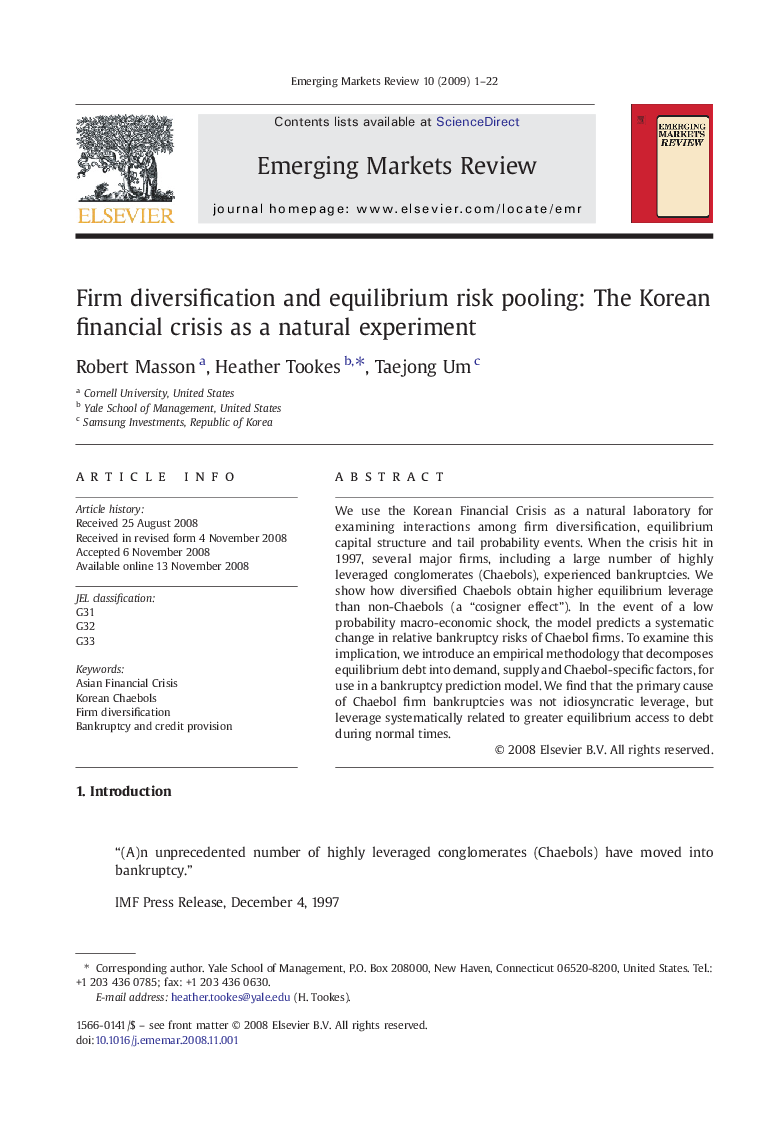| کد مقاله | کد نشریه | سال انتشار | مقاله انگلیسی | نسخه تمام متن |
|---|---|---|---|---|
| 5063446 | 1372231 | 2009 | 22 صفحه PDF | دانلود رایگان |

We use the Korean Financial Crisis as a natural laboratory for examining interactions among firm diversification, equilibrium capital structure and tail probability events. When the crisis hit in 1997, several major firms, including a large number of highly leveraged conglomerates (Chaebols), experienced bankruptcies. We show how diversified Chaebols obtain higher equilibrium leverage than non-Chaebols (a “cosigner effect”). In the event of a low probability macro-economic shock, the model predicts a systematic change in relative bankruptcy risks of Chaebol firms. To examine this implication, we introduce an empirical methodology that decomposes equilibrium debt into demand, supply and Chaebol-specific factors, for use in a bankruptcy prediction model. We find that the primary cause of Chaebol firm bankruptcies was not idiosyncratic leverage, but leverage systematically related to greater equilibrium access to debt during normal times.
Journal: Emerging Markets Review - Volume 10, Issue 1, March 2009, Pages 1-22